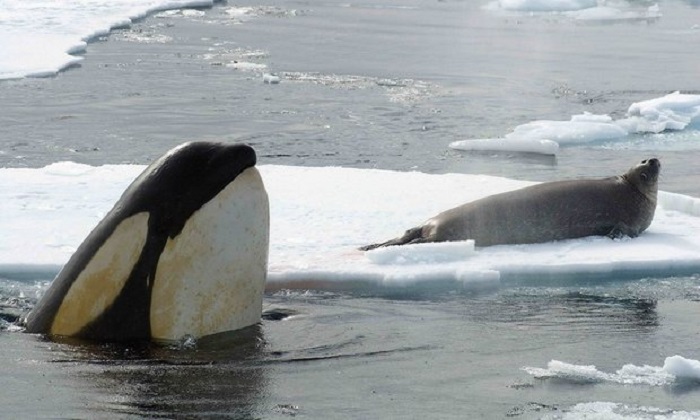Secrets of killer whale evolution revealed by genetic study

Researchers report in Nature Communications that they sequenced the entire genomes of 50 killer whales from a range of population groups. They used the differences between each individual to track back to the most recent common ancestor of them all, perhaps less than 250,000 years ago.
They then used the same genetic data to pinpoint mutations that might be linked to behaviour that would be reinforced by social learning.
“What is remarkable is that it is incredibly close to what we see in humans,” said Andrew Foote, a geneticist and ecologist at the University of Bern in Switzerland, who with colleagues from Uppsala in Sweden led the study. “Generation time – the time of becoming an adult and having offspring - is also quite similar, roughly 25 years, and they live to roughly the same age.”
Some groups of Orcinus orca live on a diet of fish, others on mammals, some on birds and reptiles. Some live in Arctic waters, some in the Antarctic. Some groups tend to stay in one place, others are travellers. Although males may occasionally hunt on their own, killer whales tend to stick together and work in tight groups led by the matriarch, and mother killer whales have even been seen been seen pushing their young ashore to hunt for seals.
Mammals cannot generate their own methionine: it comes with a diet of protein. Some killer whales have evolved the ability to store a surplus of cysteine, created from methionine, for later use.
Some of the different orca behaviours can be linked to genetic variations that might favour survival in polar seas, the appetite for oil-rich diets, or the capacity to store vital nutrients between infrequent meals.
One of these is a variant in the metabolic cycle that turns the essential amino acid methionine into protein-building cysteine. The variant found in those orcas that eat dolphins or seals helps turn surplus cysteine back into methionine for later use.
“We saw it almost in parallel in two different places,” Dr Foote said. “Up in the North Pacific we have a mammal-eating killer whale in the same waters as a fish-eating killer whale and we have another that evolved independently in Antarctic waters. We found that the genes under selection in both of these mammal-eating killer whale types were in the methionine cycle. It wasn’t the same gene in each case, but both were linked to this cycle.”
Mammals cannot generate their own methionine: it comes with a diet of protein. So some killer whales had evolved a safety valve that meant that a sudden surplus of cysteine could be saved for later use. Fish-eating orcas can feed on salmon or herring throughout the day. Mammal-hunters live more precariously on a diet of a dolphin a day.
“They are getting their protein in one big meal in one sitting,” he said. It could be that the methionine variant gave the mammal hunters to make the most of each mouthful and save their surplus cysteine for later need. Killer whales may be the only large carnivore with such variation in preferred habitats and diets.
“The only other one I can think of is ourselves, really. I think it is linked to the geographic spread: killer whales are found from the Arctic to the Antarctic and all the waters in between,” Dr Foote said.
“Humans and also brown rats are the only other mammals that spread across such a wide geographic range. I think it is all the different prey items that make it possible. As a species they feed on almost everything, from turtles to seabirds to mammals.”
We mistakenly referred to “some species of Orcinus orca ...” in an early version of this story. Orcinus orca is, of course, a species - we meant groups of this particular species. This was corrected on 31 May 2016.















































